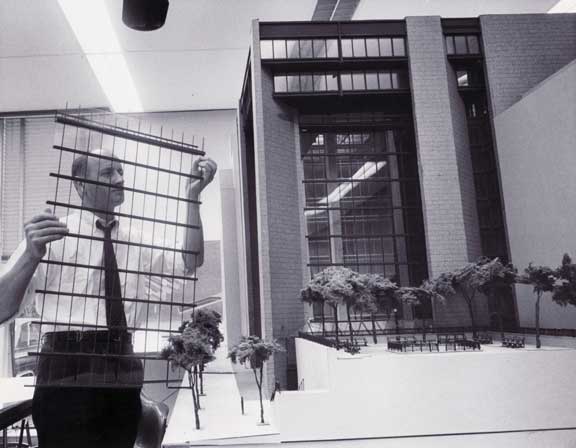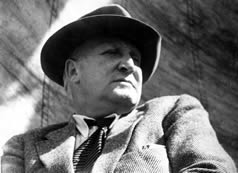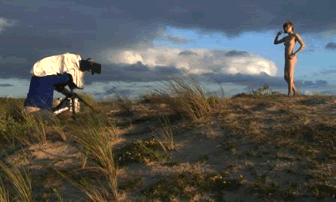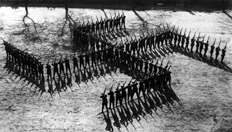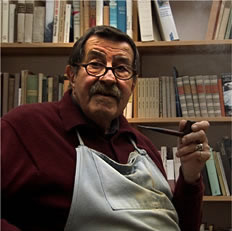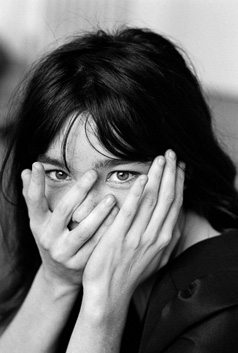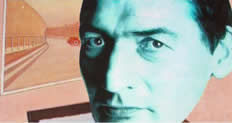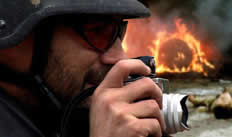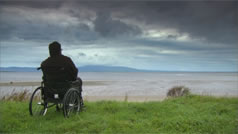|

KEVIN ROCHE: THE QUIET ARCHITECT
Ireland / 2017 / 81 mins /in colour / HD/ directed by Mark Noonan
Synopsis: Still working at age 95, Pritzker Prize winning Irish-American architect Kevin Roche is an enigma. He’s reached the top of his profession, but has little interest in celebrity and eschews the label “Starchitect”. Despite a lifetime of critically acclaimed work that includes the Ford Foundation, Oakland Museum of California and 40 years designing new galleries for "The Met" in New York, he has no intention of ever retiring and keeps looking forward.
Through Roche’s 70 year career the film considers many of the key architectural questions and looks at the complex relationship between the architecture profession and the public it serves. Roche's architectural philosophy focuses on creating “a community for a modern society” and he has been credited with creating green buildings before they became part of the public consciousness.We consider the application of his philosophies in the buildings he has created, such as the enormous “groundscraper" built into a gap in a Connecticut forest for Union Carbide and the downtown Columbus offices for Cummins Inc, as well as his concept for The Museum of Jewish Heritage in Battery Park, New York.


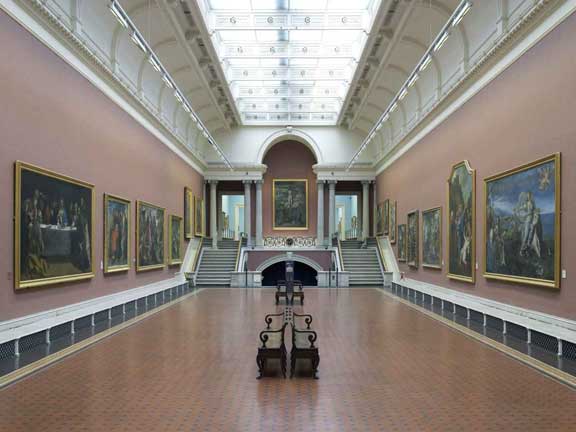
Ireland, 2017 / 79 mins / in colour / HD / directed by Adrian McCarthy
Synopsis In 2011, the National Gallery of Ireland closed the historic Victorian wings that comprised two thirds of its exhibition spaces to begin a massive refurbishment project. The objective was to transform these impressive Victorian buildings back to their original beauty while creating one of the most impressive modern gallery spaces in Europe.
Throughout this formidable construction project, the remaining third was kept open and a buffer zone was created between the noisy building project on one side of the wall and the busy public galleries on the other side. The filmmakers flip seamlessly between the partitions to observe the slowly progressing construction project which had to overcome many setbacks, whilst at the same time filming the ongoing routine of exhibition openings and the daily stream of gallery visitors.
The filmmakers observe both staff on both sides of the partitions, at work behind the scenes and were present to film the miraculous repair and return to public display of a priceless Monet painting "Argenteuil Basin with a Single Sail Boat”that was vandalised by a member of the public. In June 2017, the National Gallery of Ireland re-opened its historic wings to the public.


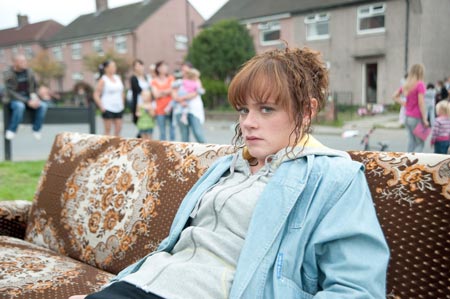
UK, 2010 / 90 min’s / col’ / directed by Clio Barnard
Produced by Tracy O'Riordan, Executive Producer - Michael Morris
An Artangel /UK Film Council Production
Tribeca Film Festival -Winner - "Best New Documentary Filmmaker", Clio Barnard
London Film Festival – Winner - “Best New Filmmaker”.
London Film Festival - Winner - “Sutherland Trophy for the Most Original Film”
Sheffield Int’l Documentary Film Festival - Winner - “Innovation Award”
British Independent Film Awards – Winner - “Best Debut Director” Guardian First Film Awards – Winner - “Best First Film”
Punto de Vista (Pamplona) Int’l Documentary FF – Winner Jean Vigo Prize for Best Director
Planete Doc Review, Warsaw – Winner Doc Art Award
BAFTA Awards – Nomination for “Outstanding Debut by a British Writer, Director or Producer
Grierson Documentary Awards, London – Winner – “Best Cinema Documentary”
A street in Bradford, Northern England known as "The Arbor" left an indelible impression on playwright Andrea Dunbar. She grew up there, named her first play after it and based all of her subsequent work there, of which her best known Rita Sue and Bob Too was adapted successfully for the big screen in 1987. She died tragically at the age of 29, leaving 3 young children.
Director Clio Barnard could have adapated Dunbar's play The Arbor for the screen or made a conventional documentary on her life, but instead she has crafted a captivating and truly unique work that transcends genre and defies categorization. Following two years conducting audio interviews with Dunbar's family, friends and neighbours, Barnard filmed actors lip-synching the interviews, flawlessly interpreting every breath, tick and nuance. Barnard's film focuses in particular on the playwright's troubled relationship with her daughter Lorraine who was just 10 when her mother died. Barnard connects with Lorraine, now aged 29 herself, to re-introduce her to her mother's plays and private letters, prompting her to reflect on the extraordinary parallels between their lives.
Interwoven with these interviews are staged scenes of Dunbar;s play filmed on "The Arbor", the street where she lived. Barnard seamlessly stitches these disparate but innovative elements matching Dunbar's unconventional life with a befittingly unconventional film.
Selected Critics Top 10 listings for 201
The Guardian (Jason Solomon)
Time Out (David Calhoun)
Sight & Sound Magazine (No. 5 in Critics Poll)\
Selected Reviews
Dramatically spellbinding and intellectually stimulating…. A must-see entry in the ongoing evolution of cinematic formalism, “Arbor” also makes for one helluva popcorn outing”.
Ronnie Schieb - Variety, May 2010.
“…suggestive and enthralling…..one of the year’s most original films…” Rating *****
Dave Calhoun – Time Out London, Oct 2010
“ …merges documentary and performance to mesmerizing effect…” Rating ****
Peter Bradshaw – The Guardian, Oct 2010
“Director Clio Barnard’s fascinating and moving documentary about British playwright Andrea Dunbar opens with the on-screen message “this is a true story, filmed with actors lip-synching to the voices of the people whose story it tells”. It is a compelling technique that brings the story of Dunbar, told by her family and friends, vividly to life.”
Mark Adams – Screen International, May 2010.



UK, 2005 / 95 min’s / col’ & b&w / directed by Adam Low / music by Brian Eno
International Emmy – Nomination for Best Arts Programme
Chicago International Film Festival - Gold Plaque, Best Arts/Humanities film
Bacon’s Arena is a co-production between the BBC and the Estate of Francis Bacon made in the run-up to the artist’s centenary in 2009.
The director Adam Low, links Francis Bacon’s art and life by reviewing his paintings through their connection to his relationships with six different men in six decades of his life. Archival footage is used in such a way that Bacon and his work are given a powerful presence. We experience him as a very charming man, in striking contrast to his paintings of screaming popes and deformed bodies, which many perceive as extremely violent.
But Bacon himself was of the opinion: ‘No work has the violence that life itself has.’ The ‘flesh’, the opened skin becomes the place of desire for him: ‘How can you cut your flesh open and join it with the other person?’ asks Bacon in the film. ‘It’s not possible to do…everything escapes you even if you are in love with somebody…and so it is with art; it’s almost like a long affair with images, sensations, passions.’
Originally broadcast by the BBC in 2005, the documentary has been expanded into a much bigger package for DVD release, with an extensive array of extras, films and interviews, produced exclusively by the Estate of Francis Bacon to coincide with the centenary.


A BOATLOAD OF WILD IRISHMEN
- A documentary about Robert Flaherty -
Ireland UK / 2011 / 84 min’s / col & b&w / Directed by Mac Dara Ó Curraidhín / written by Brian Winston
Robert Flaherty (1884 – 1951) was the man credited with being the father of the modern documentary after he produced and directed “Nanook of the North” in 1922. He’s one of the great name directors in the history of cinema and to this day films such as “Nanook of the North”, “Moana”, “Man of Aran” and “Louisiana Story” are widely regarded as classics and still regularly screened.
Flaherty is a controversial figure in that he was also the first to show that filming the everyday life of real people could be moulded into dramatic, entertaining narratives. In the process however, there was a lack of concern for distortion or stereotyping.
Flaherty’s third documentary feature “Man of Aran”, was shot in 1934 on the Aran Islands off Ireland, for its climax he staged a sequence with a small boat struggling to make land through a rocky shore in the midst of a stormy Atlantic sea. He later recalled “I have been accused of trying to drown a boatload of wild Irishmen off Aran”. Hence the title of the new documentary film A Boatload of Wild Irishmen which examines the moral complexities of the man and his work.


BEAUTY WITHIN US – THE PHOTOGRAPHER JOCK STURGES
Germany, 2009 / 52 min’s / col’ & b&w / directed by Christian Klinger & Thomas Tielsch
The American Jock Sturges is regarded internationally as one of the most important
photographers working in portraiture. His enduring theme is the female nude and “nudity as a natural state” and his photographic style one of portraying a classical aesthetic of beauty. Sturges takes his photographs mostly on the nudist beaches of Europe – where he spends his summers.
As his work touches on a taboo subject, controversy is never far away. Child pornography charges in the US were dismissed but also in Europe there have been problems when his pictures are exhibited. His models are among the staunchest supporters of his work and are consistently at ease with their portrayal in his pictures, including adults whom Sturges first photographed as children. The filmmakers take the approach of allowing Sturges to speak for his own art (as he works) and his family and models to speak for themselves, leaving viewers to make up their own minds on the thorny issues.
“He has continued a tradition which before photography was common practice in painting. The beauty of the body which is also the beauty of nature, he shows them as interrelated.”
Jean-Christophe Amman, buyer of Sturges work for the Museum of Modern Art, Frankfurt.


BLACK SUN –The Esoteric Culture of the Third Reich
Germany, 1999 / 90 min’s / col’ & b&w / written and directed by Rudiger Sunner
For more than sixty years, historians, political scientists and others have attempted to explain the murderous ideology of National Socialism-in particular the theories of its founders Adolf Hitler, Heinrich Himmler and Alfred Rosenberg-and their dreams of a "Thousand-Year Reich" of Aryan world domination, which led to the Holocaust, war crimes and other atrocities.
BLACK SUN sheds new light on the sources of Nazi ideology by examining its occult roots in the world of myths, symbols and fantasies. It traces this development from the writings of various mystics in the early 20th century, which located the original home of the Germanic peoples in sunken continents such as "Thule" and "Atlantis," and propagated the mythology of a superior Nordic race whose heroes fought the forces of moral decadence and racial impurity.
The film uses interviews, rare archival footage and contemporary scenes shot in historic locales throughout Germany to chronicle how the Nazis used these mythological foundations to develop Nazism as a political religion, with the SS conceived as a "Holy Order" defending "Aryan light" from the "Jewish-Bolshevik darkness." It profiles some of the more eccentric members of the SS-including Karl Maria Wiligut, Richard Anders and Otto Rahn-plus cofounders of the Ancestral Heritage Society-Wolfram Sievers and Herman Wirth-who conducted anthropological and archaeological research to confirm their theories of a "master race."
While BLACK SUN documents the nationalist mystical beliefs that infused National Socialism, the film also reveals the disturbing perpetuation of these beliefs among certain cult groups in Germany today, reflecting an ongoing search for salvation, inspiration and messianic leaders.


gunter Grass – the awkward one (der unbequeme)
Germany 2007 / 90 mins / col' / directed by Sigrun Matthiesen & Nadja Frenz
Winner of the Nobel Prize for literature in 2005, Gunter Grass is one of the literary giants of modern times. He is probably best known around the world as the author of The Tin Drum (Die Blechtrommel) of which a film adaptation directed by Volker Schlondorff won the Palme D’Or at the Cannes Film Festival and an Academy Award for Best Foreign Language Film.
The filmmakers take the simple but highly effective approach of accompanying Gunter Grass in the run-up to the publication of his controversial novel “Peeling The Onion”, and in the process they build up an intimate highly insightful portrait of the man, his life and work.
For instance a round table meeting with his translators from many countries seems routine, but the task at hand of creating new improved translations of The Tin Drum becomes a fascinating insight. The first translations were regarded as timid and conventional efforts that diminished the power of the German original. It’s a genuinely thought provoking insight into his literary style and uniquely expressive use of the German language, and the challenges faced in adapting into other languages.
During this time, he travels to readings, awards ceremonies and meetings, pays a visit to his birthplace in Gdansk (then Danzig) and together with his daughter Helene Grass he gives a stage performance in Paris – while the whole time working on his novel.
The filmmakers are present during the revelations that he was in the Waffen SS as a young conscript as the war was nearing its end. The documentary also includes interviews with colleagues and friends such as Amos Oz, Salman Rushdie and as a lifelong Social Democratic Party supporter, with the German ex-Chancellor Gerhard Schroder.


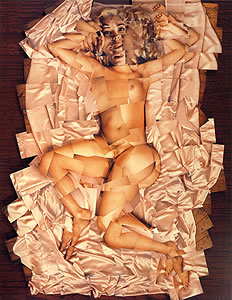
UK / 2009 / 52mins / col / directed by Paul Joyce
Hockney on Photography is a documentary exploration of Britain’s greatest living artist’s on-off love affair with photography and of the revolutionary innovations he has made to the artform. David Hockney began experimenting with photography in the 1970’s and the first appearance of his highly distinctive collages such as Nude (posed by Theresa Russell) had a huge impact in the art world and among a wider public.
Hockney takes us on a personal journey of discovery, tracing his own footsteps as he shows us how he explored the possibilities of what the camera had to offer and how the results fed back into his other artistic preoccupations (Painting, Drawing, Fax Art, Photocopying, etc.). Using many examples of his own unique work he guides us through this extraordinary journey of visual exploration, which culminated in one of his greatest works: ‘Pearblossom Highway’ which is now housed in the Getty Museum.
Director Paul Joyce’s previous collaborations with Hockney on two major books (‘Hockney on Photography’ and ‘Hockney on Art’) allowed him unprecedented access not just to Hockney himself but to his huge photographic archive, much of which has been rarely seen before (but which provides continuous illustrations for the documentary).


LOOKING FOR LIGHT: JANE BOWN
Directed by Luke Dodd and Michael Whyte
UK / 2014 / 90 min’s / in colour / HD
Looking for Light: Jane Bown is a moving portrait of the photographer, Jane Bown. She worked for the Observer newspaper her entire career and during that time took unforgettable images of hundreds of subjects as varied as Bjork, Samuel Beckett, Orson Welles, Jean Cocteau, Andrei Tarkovsky, John Lennon, The Queen and the Coen Brothers. Using basic equipment and often relying on available light, she developed a deceptive technique to produce her highly distinctive and indeed iconic photographs. Her quiet unassuming manner and unthreatening presence is one explanation for capturing extraordinary images of her subjects. The documentary reveals her quiet determination working in an almost exclusively male world and how the sorrow of her early childhood informed her unique photographic style. By giving the viewer time to absorb so many wonderful portraits this documentary is essential viewing for anyone with even the slightest interest in photography.
Her subjects said-
“She can look at a person and she knows, instinctively, straightaway who they are. She’s bullet-proof” - Bjork
“This is the best double portrait we have ever had taken” – Joel & Ethan Coen
“With the sun coming through a window and just the camera between us I just felt a real warmth and intimacy, a love really…that is what I felt, I felt love” – Richard Ashcroft (lead singer – The Verve)
Reviews
A quiet, moving portrait of Jane Bown, the longstanding Observer photographer who has taken all those iconic portraits you know, but probably didn’t know she’d taken.”
The Spectactor
“Looking for Light: Jane Bown”, by Michael Whyte and Luke Dodd, is a gently illuminating documentary tribute to the Observer photographer of the title, who produced astonishingly memorable images of some of the most important figures of the 20th century… One of the most pleasurable aspects of this film is the relaxed opportunity it gives one to look at the spectacular yet natural composition of so many of Bown’s portraits and marvel at the revelations that flow from quietness.”
Sunday Telegraph


OSCAR NIEMEYER (Oscar Niemeyer a Vide e um Sopro)
Brazil, 2007 / 90 mins & 52 mins / col’ & b&w / A film by Fabiano Maciel and Sacha
Oscar Niemeyer is one of the greatest architects that the world has ever seen and this documentary, made to coincide with his 100th birthday reveals a truly remarkable man. Still working and revealing an amazingly undiminished intellect and physical capacity, Oscar Niemeyer recounts his long life and remarkably prolific output. This included the designing of an entire city, Brasilia, and an astonishing array of eye-catching landmark buildings in Brazil and elsewhere, captured by the filmmakers with the aid of some fine camerawork.
On camera he demonstrates his love of drawing and with a remarkably steady hand undiminished by age, he lightly sketches the outlines of many of his landmark buildings, whilst at the same time recounting his life and times, his ideals for a fairer society and metaphysical issues such as the insignificance of Man compared to the Universe.
Niemeyer is one of the great 20th-century modernists. Along with peers like the Bauhaus director Walter Gropius and Corbusier, Niemeyer was enchanted by modern building techniques that liberated architects from traditional structural concerns, but his seductive and sensuous architecture was often at odds with modernism’s push toward building standardization.
It is not the right angle that attracts me, nor the straight line, tough, inflexible, created by man. What attracts me is the free, sensual curve. The curve I find in the mountains of my country, in the sinuous course of its rivers, in the waves of the sea, in the clouds of the sky, in the body of my favorite woman. The whole universe is made of curves.
Oscar Niemeyer


REM KOOLHAAS - A KIND OF ARCHITECT
Germany, 2007 / 97 mins / col / Directed by: Markus Heidingsfelder and Min Tesch
Rem Koolhaas is one of the world’s most renowned architects and commissioned for landmark projects all across the globe. His outstanding creations such as the Dutch Embassy in Berlin, the Seattle Library, the Casa da Musica concert hall in Porto and the Guggenheim Heritage Museum in Las Vegas are working examples of the Dutchman’s visionary theories about architecture and urban society.
Koolhaas' work is as much about ideas as it is about constructing buildings; he is equally celebrated as a writer and social commentator, his 1978 publication Delirious New York: A Retroactive Manifesto for Manhattan is heralded as a seminal text on modern architecture and society. Another publication S, M, L, XL is a highly influential 1376-page tome combining essays, manifestos, diaries, fiction, travelogues, and meditations on the contemporary city.
For Koolhaas what is essential is not to create individual masterpieces, but to provoke and excite through the wide range of his activities. Rem Koolhaas: A Kind of Architect is an engaging visually inventive and thought provoking portrait of a visionary man, which takes us to the heart of his ideas.
“the only movie about me that I like”.
Rem Koolhaas


SHOOTING ROBERT KING (formerly Blood Trail)
UK, 2008 / 78 min’s / col / directed by Richard Parry
Award & Nominations.
Best Cinema Documentary Nomination – British Documentary Awards, 2009.
Outstanding Achievement in Production Nomination – Cinema Eye Non-fiction Awards, 2009.
Synopsis: In 1993 a young American named Robert King travelled to Bosnia, a naive 23 year old just out of art school with an ambition to become a war photographer and dreaming of a Pulitzer Prize. He hardly knew the rules of the game and seemed lost and out of place in the Sarajevo war zone, but those who thought he wouldn’t last were proved wrong and over the course of the film we see how King grew as a person and a professional as he moved on to cover wars in Chechnya and Iraq. Filmed over the course of 15 years, Shooting Robert King shows the unvarnished truth behind the images that emerged from those war zones as it records Robert's life from boy to man, to husband and father.
Completely blown away by it. It's beautifully put together, and by far the best war doc I have seen ...
Nick Broomfield, filmmaker
Stylishly filmed, laced through with humor, some horror, and the ever-present whiff of despair, Shooting Robert King makes for compulsive viewing
New Yorker Magazine
Richard Parry's documentary provides an intriguing glimpse into the driving forces that have King and his ilk coming back for more despite the inherent dangers...
The Hollywood Reporter
This fascinating account of the unheralded heroes of international conflict - the journos, photographers and cameramen - succeeds for exactly the same reasons as the best reportage: by focusing on just one story, it somehow tells many more.
Film4


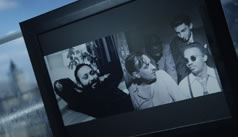
UK / 2013 / 100 min’s / in colour / directed by John Akomfrah
Sundance Film Festival, 2013 – Official Selection
Stuart Hall is one of the most influential and esteemed cultural theorists of a generation. A thinker and commentator, his peers include other giants of political commentary such as Noam Chomsky, Susan Sontag, Alan Ginsberg, Michel Foucault and Gore Vidal. John Akomfrah’s sweeping and majestic film THE STUART HALL PROJECT takes the viewer on a roller coaster ride through the upheavals, struggles and turning points that made the 20th century the century of campaigning, and of global political and cultural change.
Using rare and unseen film, radio, TV and photographic archive, as well as footage from Hall’s fifty year broadcasting career, and set to a striking and unforgettable Miles Davis jazz sound track that Hall grew up to, THE STUART HALL PROJECT explores the conundrum of being, the intellectual development, and the process of ageing for a seminal academic figure.
THE STUART HALL PROJECT is a feature documentary that navigates the numerous events that Hall was involved in discussing and commentating on in his broadcasts; from the Campaign for Nuclear Disarmament to the liberation struggles of the 1950’s and 60’s, from the end of European colonialism to the end of the Cold War, from the rise of feminism in the 60’s to the civil wars in the Balkans in the 1990’s, from debates on race to those of class. Stuart Hall has been a unique and singular voice in global cultural politics, a figure who has been able to make sense of these historic moments, including coining the term “Thatcherism” to describe the economic and social revolution to envelope Britain in the 1980’s and 90’s. Hall’s influence as a cultural theorist is as renowned in America as much as he is around the rest of the world.
Blending archival footage, home movies, Hall’s television appearances and the music of Miles Davis, Akomfrah has created a film bursting with ideas that is also enormously entertaining, in no small measure due to the fact that Hall himself is such an engaging personality”
James Greenberg - The Hollywood Reporter.
“..directed by John Akomfrah, [The Film] is a visual and sonic excursion into the life and philosophies of the Jamaican-born intellectual, a finely crafted collage of memory, distilling hundreds of hours of archival footage of Hall, and exploring not only his life story but the story of the 20th century, in many ways intertwined with his own”.
Zeba Blay - Indiewire


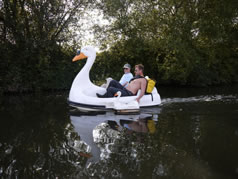
UK / 2012 / 94 min’s / col’ & b&w / directed by Andrew Kotting
Swandown is a travelogue and odyssey of Olympian ambition in which Andrew Kötting (the filmmaker) and Iain Sinclair (the writer) pedal a swan-shaped pedalo from Hastings on the south coast of England via the sea, rivers and canals to London. With modest references to Herzog’s Fitzcarraldo mixed with a little Dadaism, the film documents their epic journey, on which they are joined by invited guests who share in the pedaling. En-route they encounter travellers, river-dwellers, outsiders, refuseniks and ordinary passers-by whose reactions are a mixure of amusement, puzzlement and ridicule.
Andrew Kötting is one of Britain’s most intriguing artists, and perhaps the only film-maker currently practising who could be said to have taken to heart the spirit of visionary curiosity and hybrid creativity exemplified by the late Derek Jarman. Swandown is a fine example of his oeuvre in which he is joined by writer and cultural explorer Iain Sinclair who’s best known in film circles for his collaborations with Christopher Petit.
Swandown is utterly funny, deeply lyrical, wholly winning, unchallengeably unique. It converts Kötting at a stroke from an acquired taste to a required one. *****
The Financial Times
An engagingly eccentric aquatic odyssey
Screen International
The waterways are beautifully shot, by day and night, and the surreal giant swan turns the dullest of landscapes into a funfair. [...] The film is as fascinating as it is self-indulgent and meandering.
The Times
There’s something enjoyably Herzogian about the pair’s trip: the way Kötting and Sinclair wrestle their craft, nicknamed Edith, over muddy embankments and bicker as they splosh along loamy waterways makes Swandown feel like Fitzcarraldo on a You’ve Been Framed budget. ****
The Telegraph


where i AM
Directed by Pamela Drynan
Ireland / 2013 /70 min’s / in Colour / HD
Slamdance Film Festival, 2013, Documentary Feature Competition
Dublin Int’l Film Festival, 2013, Official Selection
Synopsis: Gay American writer Robert Drake is on the road to recovery – but this is a journey with a difference. Over ten years have passed since a violent and bloody attack by two young men in Sligo, Ireland one dark night left him paralyzed. It also stopped a writing career just as it was about to take off. From his home in Philadelphia we follow Robert as he takes a trip back to Ireland to confront the memories of what happened and lay the past to rest. Full of laughter, tears and literary types, this documentary captures Robert’s spirit and intention – that of moving on positively and taking the world with him.
In her feature film directorial debut, Pamela Drynan presents a powerfully inspiring documentary. The world would be a much better place if we all had Drake's positivity and his incredible ability to forgive.
John Ford - SLUG Magazine (Salt Lake City)

|
|
